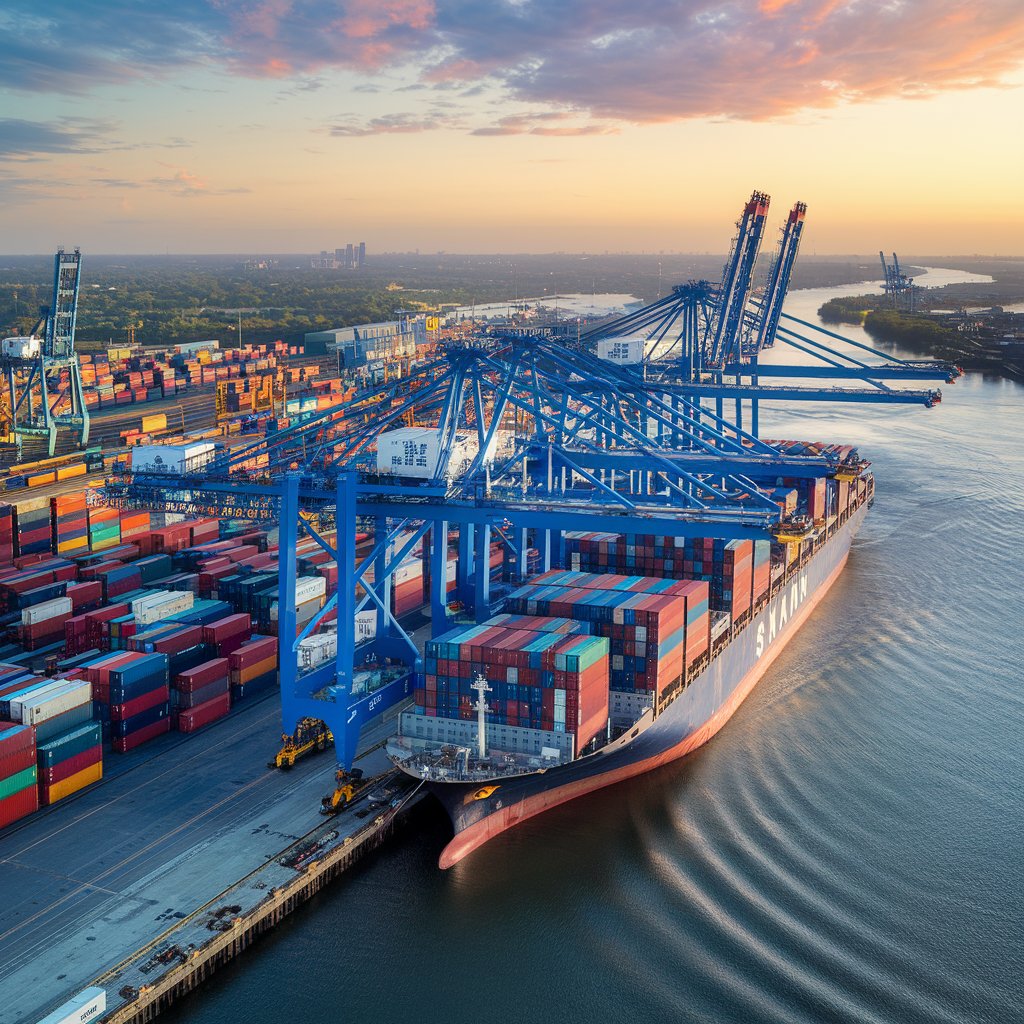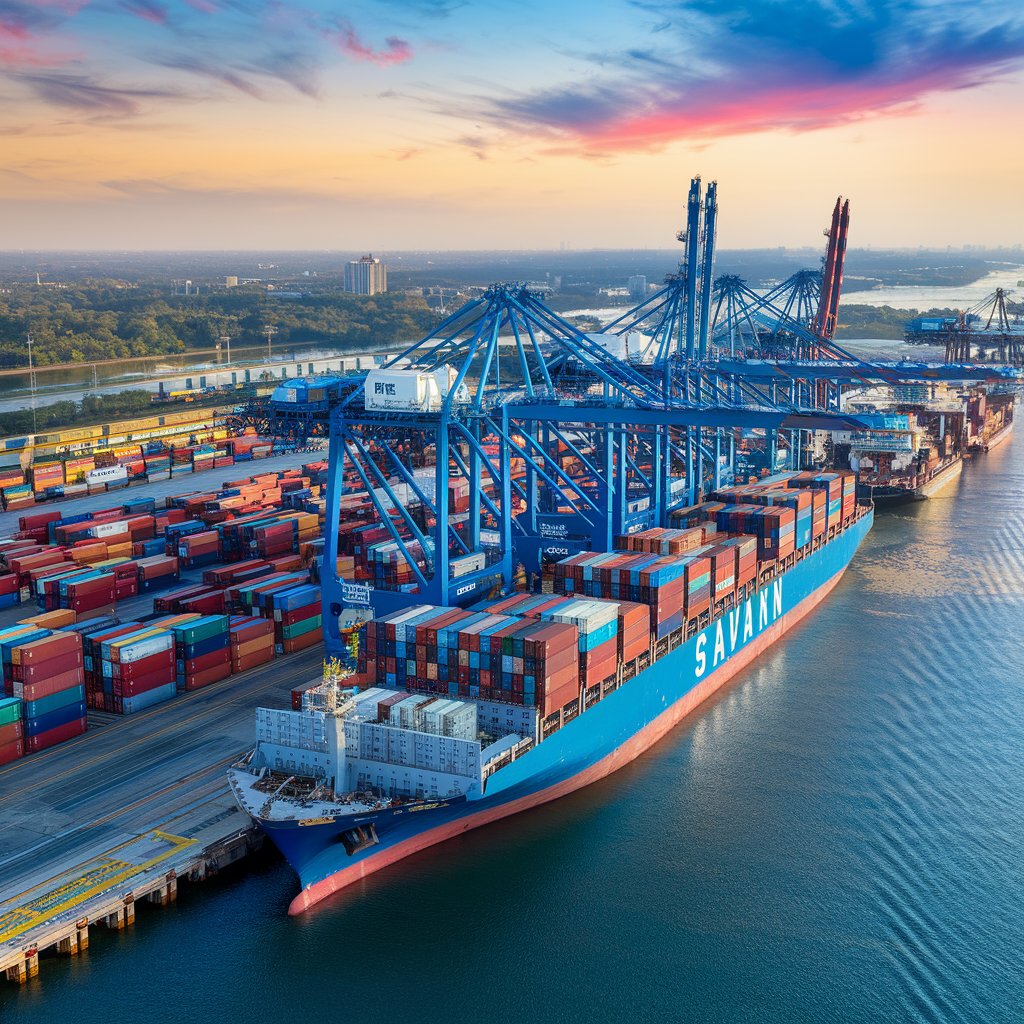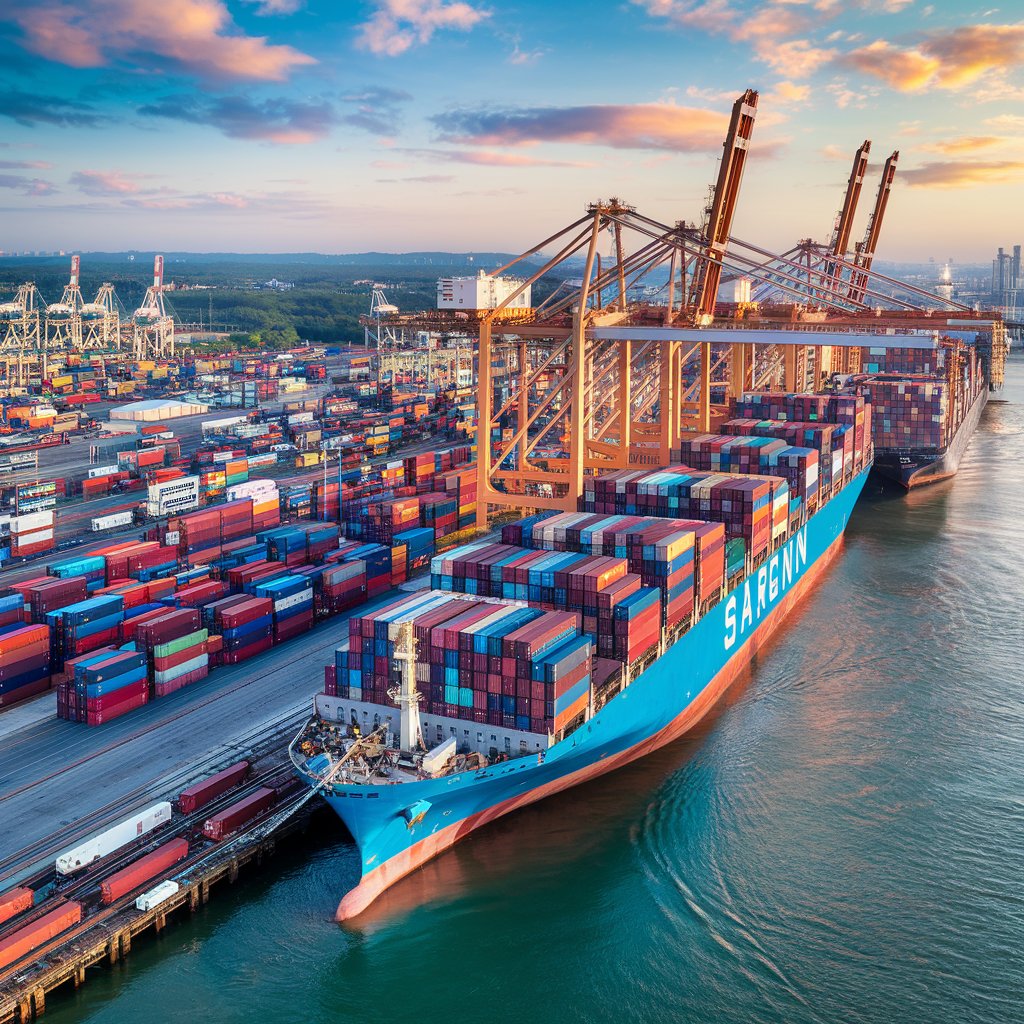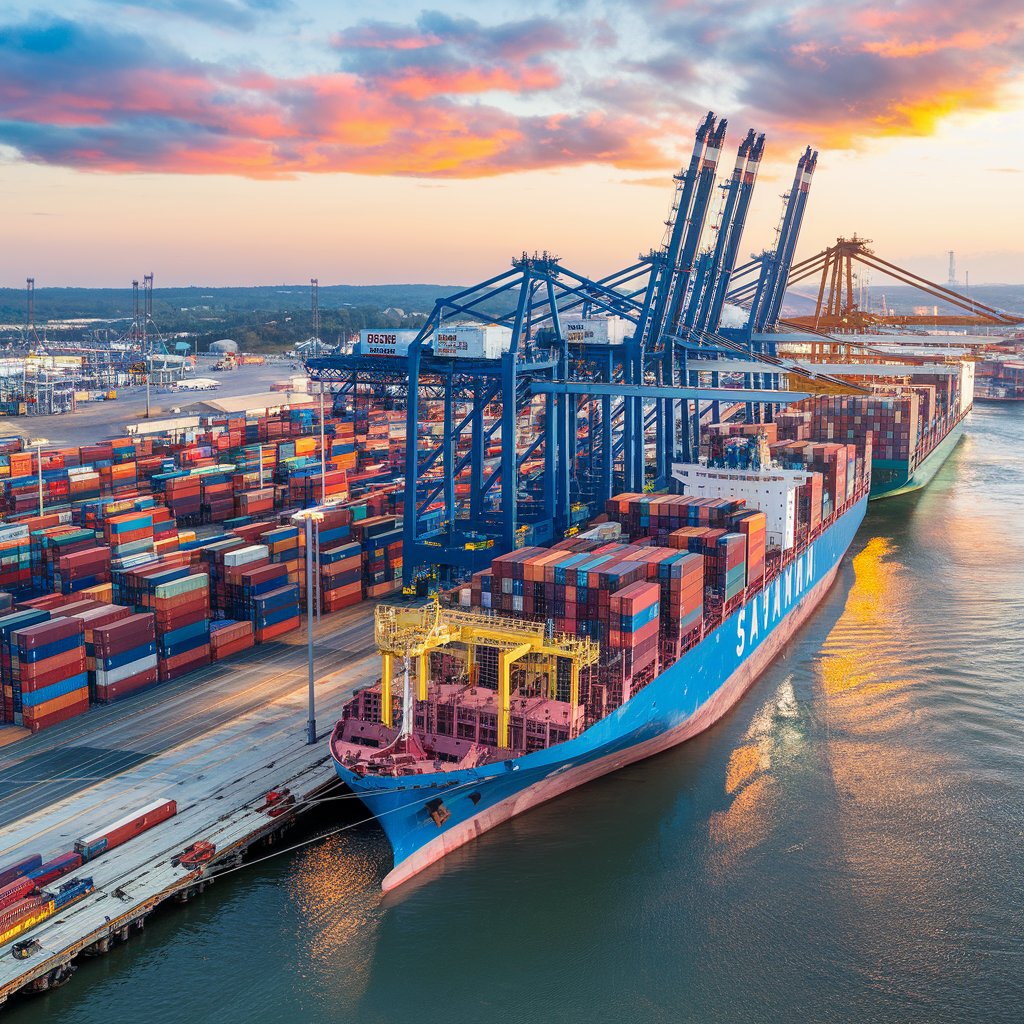The Basics of Garden City Terminal

What Is Garden City Terminal?
Garden City Terminal (GCT) is the largest single-terminal container facility in North America, operated by the Georgia Ports Authority (GPA). It is known for its strategic location, advanced infrastructure, and high cargo-handling capacity.
Key Facts About Garden City Terminal
- Location: Savannah, Georgia.
- Operator: Georgia Ports Authority (GPA).
- Function: Handles containerized cargo for domestic and international trade.
- Size: Over 1,200 acres – the largest single-terminal port in the U.S.
- Annual Capacity: More than 5 million TEUs (Twenty-foot Equivalent Units).

Key Features
1. Massive Cargo-Handling Capacity
- One of the busiest U.S. container terminals.
- Handles shipments from major global shipping lines.
2. Advanced Infrastructure & Equipment
- Features largest fleet of ship-to-shore cranes in the U.S.
- Offers automated container tracking and scheduling systems.
3. Intermodal Connectivity
- Direct access to CSX and Norfolk Southern rail networks.
- Serves major U.S. markets within 2-5 days.
4. Efficiency & Expansion Plans
- Ongoing projects to expand capacity to 9 million TEUs by 2030.
- Investment in new cranes, berths, and rail yards.
5. Fast Truck Turnaround Times
- On-terminal truck gates allow quick cargo pickup and drop-off.
Average truck turn time: less than 50 minutes.
Practical Uses of Garden City Terminal
1. International Shipping & Trade
- Supports importers and exporters with global shipping routes.
2. Supply Chain & Logistics Operations
- Key hub for warehousing, transloading, and distribution.
3. Intermodal Rail Transport
- Direct rail services to Midwest and Southeast U.S..
4. Retail & E-commerce Fulfillment
- Used by Walmart, Home Depot, and Target for regional distribution.

Advantages and Challenges
Advantages | Challenges |
Largest U.S. container terminal with high capacity. | High cargo volumes can lead to occasional congestion. |
Strong rail and trucking connections. | Weather-related delays (hurricanes, storms). |
Fast turnaround times for trucks and ships. | Limited space for expansion within Savannah. |
Technology-driven cargo handling improves efficiency. | Increased demand requires constant infrastructure upgrades. |
Garden City Terminal vs. Other U.S. Container Terminals
Terminal | Location | Key Feature |
Garden City Terminal | Savannah, GA | Largest single-terminal container facility in the U.S. |
Port of Los Angeles | Los Angeles, CA | Handles highest volume of U.S. imports. |
Port of Houston | Houston, TX | Key terminal for energy and chemical exports. |
Port of New York/New Jersey | New York, NY | Major East Coast entry point for international trade. |

When to Use Garden City Terminal?
- Ideal for businesses shipping to/from the Southeast U.S.
- Best for retailers, manufacturers, and logistics providers needing fast distribution.
- Recommended for companies requiring strong rail and trucking connections.
- Not ideal for bulk cargo or specialized shipments (other terminals may be better suited).
Conclusion
The Garden City Terminal at the Port of Savannah is a vital logistics hub in North America. With its high cargo capacity, advanced technology, and strong intermodal connections, it is a top choice for businesses handling international trade and distribution.
By understanding the capabilities, advantages, and schedule operations of, companies can optimize supply chain efficiency, reduce transportation costs, and improve cargo handling in one of the fastest-growing U.S. ports.
